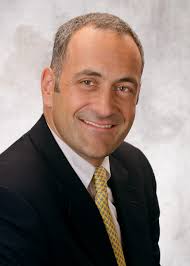While there is a tendency to romanticize “country life,” living in a rural area of the United States can be dangerous to one’s health especially for children. According to the Health Resources and Services Administration (HRSA), an agency of the U.S. Department of Health and Human Services, children living in rural areas are more vulnerable to death from injuries, are more likely to use tobacco and other unhealthy substances and are more likely to be obese than their urban counterparts. Rural families may also not have the same access to healthcare because health services are not always located nearby.
While many rural towns may have one or two general practitioners available to serve their communities, in most cases, access to a pediatrician is very limited and often requires a trip to a larger city. This results in a logistics challenge for both the patients and the practitioners who must coordinate such routine treatments as vaccinations and well visits for patients who live in an area that might cover hundreds, if not thousands, of square miles. A pediatric-focused electronic health records (EHR) platform such as PCC EHR can help pediatricians who serve rural areas bridge the healthcare gaps by using technology to coordinate care for kids in both urban and rural areas.
Mental Health Treatment in Rural Areas
While the provision of routine pediatric care to rural families is challenging, providing mental health services to this group is even more so. Fortunately, using technology to coordinate care can also help with this effort. Just ask Dr. Eric Arzubi, a child psychiatrist whose practice is located in one of the most beautiful and sparsely populated areas of the United States – Montana.

Dr. Arzubi is working on his second profession. He was a successful bond trader on Wall Street and, over time, decided that his life would be more rewarding if he were helping others rather than just making money. He graduated from Yale Medical School in 2013 and promptly moved to one of the least-populated areas of the United States – Billings, Montana – to start his practice of child and adolescent psychiatry. After immersing himself in the medical environment of this community, Dr. Arzubi realized that the rural areas of Montana had many challenges for the delivery of mental health treatment.
“Unlike Connecticut, where I had trained, the population density in Montana is very low,” he said. “There are only a few pockets of populations. To give you an idea of the vast open space, the distance from one corner of the state to the opposite corner is the same number of miles as there are between Chicago and Washington D.C. The big difference is that in Montana there are only one million people in that entire area!
“There are only a few areas where a patient can receive sub-specialist care, such as psychiatry. And the challenges of accessing psychiatric care in rural America are extremely dire, as noted by the University of Washington Rural Health Center research. “
Urban vs. Rural Healthcare Delivery
Because of the dearth of psychiatrists in the region, the “first lines of defense” for children experiencing mental health difficulties are school professionals and primary care physicians.
“Schools are not meant to provide mental health treatment,” Dr. Arzubi said. “However, between 75 and 80 percent of this treatment in the rural areas is provided by schools. This treatment is administered in school-based health centers, school counselors and in Montana we have a special group called ‘Comprehensive School and Community Treatment Teams.’
“In addition to the lack of access to care, Montana is one of three states that has no psychiatric training programs. The other two states are Alaska and Wyoming, and it is no surprise that these three states have the highest suicide rates in the country.
“Urban and rural areas both have challenges when it comes to mental health treatment. They are just different. Kids in rural areas are isolated and this exacerbates depression and other mental health issues. They also have less access to school support treatment, such as special education or a school psychologist.
“These rural states also have a very powerful gun culture. For example, Montana is ranked second in the U.S. for household gun ownership. There is a clear corollary between access to guns and the incidence of suicide.”
Strategies for Addressing Rural Mental Health Issues

Unfortunately, even the addition of more mental health professionals will not solve this problem of mental health treatment in rural areas.
“I think we’re going to have to do things differently,” Dr. Arzubi said. “We can’t add enough practitioners necessary to make a ‘dent’ in the problem. I believe our psychiatry training programs must change.
“Currently most psychiatric training programs are designed to allow the doctor to see patients for an hour every week. There are simply not enough hours in the week to make this scale to the demand for care. In my practice, I need to see hundreds of kids every week or a large number will not get access to care.
“We have to rethink our approach to this problem and use different tools in our toolbox. For example, we need to use technology to leverage our expertise. Here in Billings, we have 10 psychiatrists, four nurse practitioners and a physician’s assistant but we’re all in one town and the crisis is happening all around us. I can either wait for patients to come see me, or I can try to push our expertise out where the patients live. This is where Project Echo is helping us.”
Project Echo
“This program, originally formulated at the University of New Mexico, is a type of ‘hub-and-spoke’ design,” Dr. Arzubi said. “We have facilitators in the center in Billings and we rely on local practitioners (in the smaller communities), who know their patients better than we do, to carry out the best practices that we suggest.”
To understand more about Project Echo, click on the video below.
“One example of this involves our providing tele-psychiatry services to outlying communities. We want to build on the idea of a ‘net’ provider. This will allow us to be a local provider – where we are not sending money for tele-psychiatry outside the state – plus, it cuts the costs for these services and the local providers better understand the local systems of care.
“Another aspect of this care is integrated behavioral health where we work with primary care physician offices to integrate behavioral health in a meaningful way. This involves a collaborative care model with a well-designed workflow, the ‘gold standard’ of which is the model from the University of Washington.
“This also requires a patient registry that allows the physician to manage a population of patients and stratify them according to risk. This allows a primary care doctor to look at his or her dashboard every day and determine the most high-risk patients and give them immediate treatment.”
An EHR for Mental Health Screening
Using technology to leverage efficient treatment of children is the foundation of the PCC EHR platform and because it is designed exclusively for pediatricians, the collaborative model for rural practitioners, highlighted by the work of Dr. Arzubi, can be streamlined. Plus, the Bright Futures section of the PCC platform entitled “Promoting Mental Health” discusses the prevalence and trends in mental health problems among children and adolescents, the need for mental health screening and referral, and the importance of addressing the mental health of children and youth with special healthcare needs. The chapter also looks at mental health issues unique to each developmental stage, along with evidence on the effectiveness of relevant health promotion interventions.
“The types of tools that I would like a psychiatric EHR to have are evidence based, well-validated screens for depression and anxiety,” Dr Arzubi said. “A tool for suicide risk assessment tool would also be valuable.
“One of the most important tools would allow the pediatrician to stratify their patient population in terms of low, medium and high risk for behavioral problems. This would allow the pediatrician to know when to refer high risk patients to a specialist. This type of patient ‘registry’ is just as important in urban as rural areas.”
The PCC EHR platform enables this efficient workflow and patient registry for both physical and mental health treatment.
“The ease of sharing information among multiple medical disciplines by means of an EHR can be invaluable for timely treatment of kids with mental health issues.”
The efficient “sharing” of pediatric patient histories is one of the most important features of the PCC platform.



